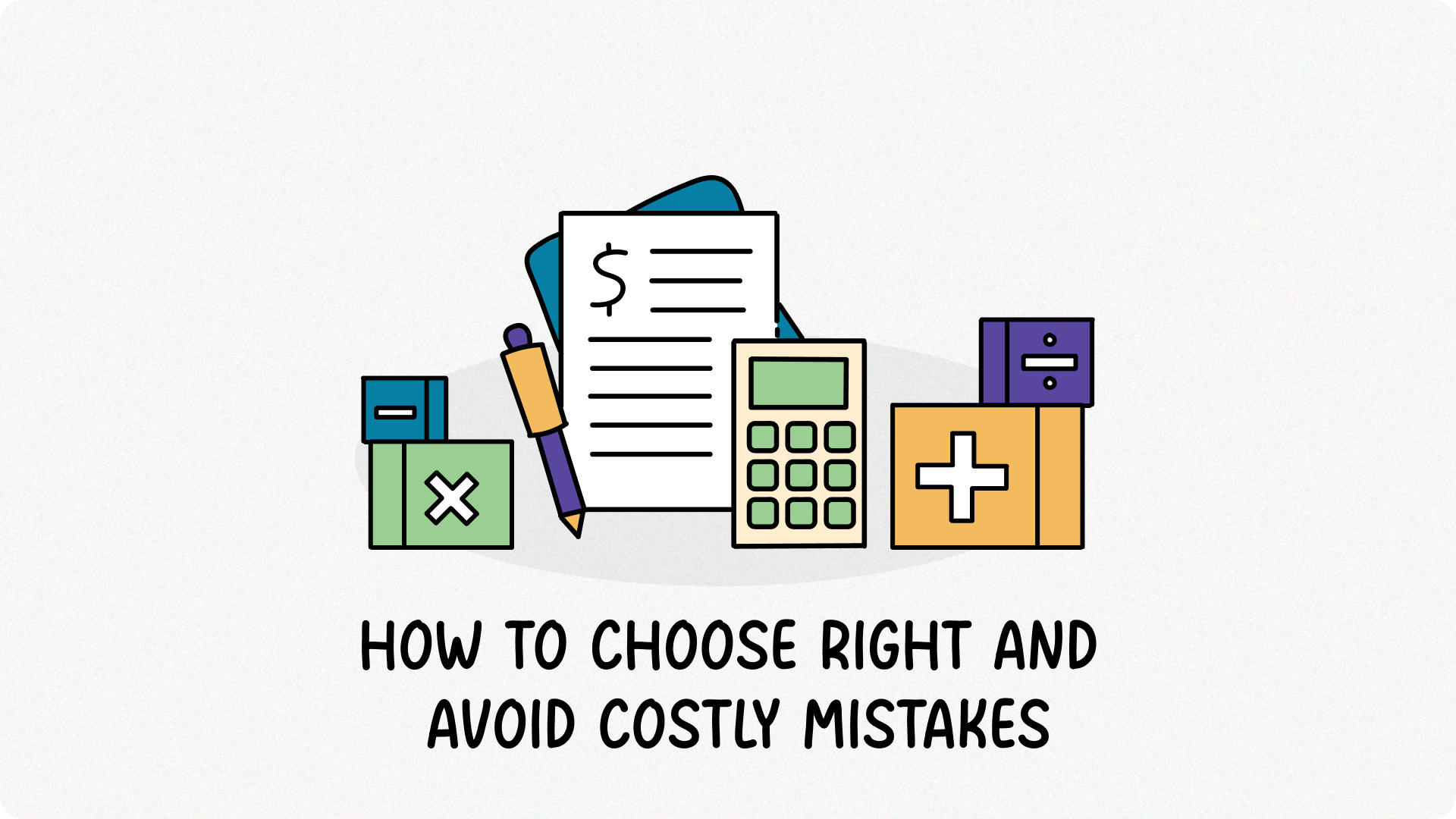When you decided to run your own business, you stepped into a role that requires managing every moving part—from client relationships to cash flow. One of the hardest but most important jobs you have is keeping your finances in order. While you may not be a certified accountant, maintaining accurate financial records is the single most important action you can take to ensure business stability and tax compliance.
This guide breaks down what high-quality bookkeeping services truly entail in the modern era, what essential features you must demand from any system (or provider), and the critical, non-obvious errors that could hurt your financial visibility and cash flow. By the end, you will know exactly how to establish an expert-level foundation for your small business finances.
Table of Contents
- What Exactly Are Bookkeeping Services? A Modern Definition and Supporting Evidence
- What Good Bookkeeping Should Expertly Offer
- Common Bookkeeping Mistakes to Avoid
- The Path to Expert-Level Financial Control
What Exactly Are Bookkeeping Services? A Modern Definition and Supporting Evidence
Bookkeeping is the structured process of recording and classifying every financial transaction that flows through your business. It transforms raw data—your invoices, receipts, and bank statements—into organized, accurate financial records that serve as the foundation for all strategic and tax-related decisions.
The Real Cost of Inefficiency
The core reason to professionalize your financial system isn’t just about compliance—it’s about protecting your time and profit. Inefficient bookkeeping directly drains both.
- The Time Drain: On average, entrepreneurs dedicate a staggering 36% of their work week to administrative tasks. That’s over a full day every week lost to non-revenue-generating work. Your focus should be on clients and growth, not data entry.
- The Stress Cost: Disorganized finances lead to real anxiety. A third of small business owners report regularly losing sleep due to financial worry. This lack of financial visibility creates chronic stress.
The Bookkeeper’s Core Responsibilities
Without accurate bookkeeping, you can’t make confident business decisions. Cash flow insights, tax planning, and even investor confidence all depend on organized financial data. In other words, bookkeeping isn’t just compliance—it’s strategy.
Here are the four pillars of effective modern bookkeeping:
- Transaction Recording: This begins with logging every single income and expense item. The key is ensuring every dollar is correctly attributed to the right category within your centralized list of accounts, universally known as your Chart of Accounts.
- Account Reconciliation: This is a crucial validation step. It involves meticulously matching your internal records to your external bank and credit card statements. This practice is the bedrock of an audit-ready business, ensuring no transaction is missed, duplicated, or misclassified.
- A/P & A/R Management: Effective bookkeeping requires detailed tracking of your incoming and outgoing debts. This includes managing Accounts Receivable (who owes you money) and Accounts Payable (who you owe). This dual focus is essential for accurate forecasting and controlling your cash flow.
- Financial Reporting: Finally, the organized data is converted into actionable intelligence. The bookkeeper generates the core reports, primarily the Profit & Loss (P&L) Statement and the Balance Sheet, which are the main tools for measuring business performance and profitability over time.
What Good Bookkeeping Should Expertly Offer
In today’s market, reliance on spreadsheets is no longer effective. Whether you hire a firm or use a powerful, integrated accounting platform, your “bookkeeping service” must deliver these expert-level capabilities:
A. Integrated, Real-Time Data Flow
A top-tier system doesn’t rely on weekly or monthly imports. It utilizes secure, API connections to your bank and credit accounts, providing a continuous, real-time feed of transactions. This automation is key to achieving instant financial visibility and virtually eliminating the need for manual data entry.
B. Intelligent Categorization and Workflow Automation
The system must go beyond simple logging. It should use AI-driven logic to suggest the correct category for each transaction based on vendor name and historical data. Crucially, it must handle the entire expense workflow:
- Receipt Capture: Using mobile OCR technology to scan the receipt image.
- Matching: Automatically pairing the receipt data (vendor, date, amount) to the corresponding transaction in the bank feed.
- Audit Trail: Instantly creating a verifiable, digital proof for every operating expense, satisfying stringent documentation requirements for tax deductions.
C. Superior Compliance and Tax Readiness
Your system should not just record; it should prepare. It needs to track expenses according to the specific rules of the applicable tax code. Look for integrated features that:
- Automate Mileage Logging: Capture deductible business travel precisely and easily.
- Track Deductible Purchases: Clearly separate capital purchases (assets) from routine expenses, which affects depreciation and reporting.
- Generate CPA-Ready Reports: Produce standardized, clean financial statements (P&L, Balance Sheet, General Ledger) that are organized by the Chart of Accounts structure your tax preparer expects. This is crucial: 70% of small business owners say the costs related to tax compliance are expensive—using clean reports is the best way to cut down those high professional service fees.
D. Seamless Invoicing and Accounts Receivable Management
For many freelancers and small businesses, cash flow is everything. An expert solution integrates invoicing directly into the books. When you send an invoice, it’s immediately logged as revenue due; when the payment clears the bank feed, the system instantly marks the invoice paid and performs the reconciliation—all without manual intervention.
Common Bookkeeping Mistakes to Avoid
These mistakes move beyond the obvious (like not separating accounts) and focus on the technical errors that often trip up small business owners, leading to confusion and unnecessary tax exposure.
Mistake 1: Neglecting the Sales Tax Liability Account
If your business collects sales tax from customers, that money is not your income; it’s a liability you owe the state. A common error is recording collected sales tax as part of gross revenue. This overstates your income, leading to higher income tax liability and inaccurate P&L Statements. You must correctly classify collected sales tax into a dedicated liability account on your Balance Sheet until it is paid.
Mistake 2: Misclassification of Fixed Assets
Many businesses immediately categorize large purchases—such as a new $3,000 laptop or specialized business software with a lifespan over a year—as a regular expense. However, these are fixed assets. Failing to capitalize them (recording them as assets) and using the appropriate depreciation method distorts your true profitability and can lead to incorrect calculations for your tax basis.
Mistake 3: Failing to Regularly Review Unapplied Customer Payments
This error happens when a customer pays an amount that doesn’t exactly match an outstanding invoice, or they pay before the service is invoiced. The money sits in a temporary “Unapplied Customer Payments” account. If left unreviewed, this money can be missed, leading to inaccurate Accounts Receivable totals and future confusion during account reconciliation. Regularly clearing this account ensures your books reflect your true client payment status.
Mistake 4: Improperly Handling Owner Draws and Contributions
For sole proprietors and partnerships, taking money out of the business is called an Owner’s Draw, and putting personal money in is a Contribution. A common error is mistakenly recording these movements as business expenses or revenue. This will seriously skew your P&L Statement. These transactions must be logged against the Owner’s Equity accounts on the Balance Sheet, ensuring your income and expenses remain clean for tax filing.
Mistake 5: The Expense vs. Capital Improvement Dichotomy
If you own property, be careful classifying renovation costs. Routine repairs (like fixing a broken window) are immediately deductible operating expenses. However, improvements that increase the property’s value or useful life (like installing a new HVAC system) must be capitalized and depreciated over time. Incorrectly classifying a capital improvement as an expense can lead to immediate tax authority scrutiny and adjustments to your taxable income.
The Path to Expert-Level Financial Control
The takeaway is clear: efficient, accurate bookkeeping is not a luxury; it’s a necessary component of your professional toolkit. By choosing a system that provides the integrated, automated, and expert-level features detailed above, you move past basic data entry and gain a powerful strategic advantage. You secure your compliance, optimize your tax position, and gain the ultimate peace of mind.
Fynlo is an intuitive, all-in-one accounting platform engineered for the small business owner and freelancer who demands both simplicity and subject matter expertise. We provide a single, integrated solution that delivers automated transaction flow, intelligent categorization, effortless tax readiness, and real-time financial reporting—empowering you to take full control of your business accounting without needing a finance degree.
Ready to implement an expert-level foundation for your small business finances and stop settling for fragmented tools? Explore Fynlo today and redefine what efficient bookkeeping means for your business.







